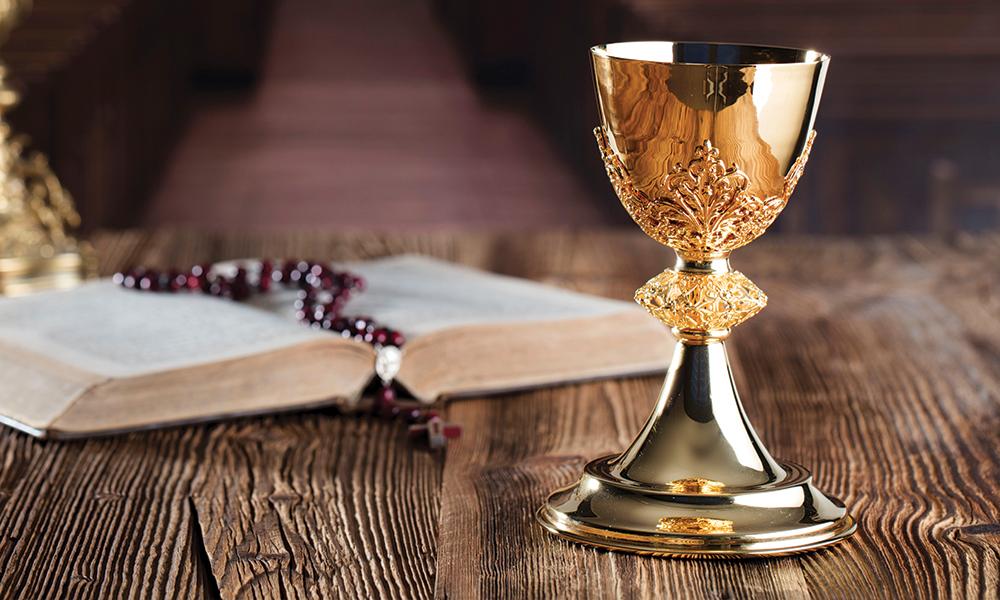
The Eucharist
What We Do Is What We Believe
What We Do Is What We Believe
Christ is present at Mass in four ways
On the night before he died, Christ gathered his disciples for a meal. He took simple bread and wine. He blessed it in a great prayer of thanksgiving to his Father. He broke the bread and gave it to his disciples. It was a familiar ritual, only this time it was different.
This bread “is my body which will be given up for you,” Christ said. This cup “is the cup of my blood, the blood of the new and everlasting covenant. It will be shed for you and for all so that sins may be forgiven.” He commanded that we continue to do this in memory of him (cf. 1 Cor. 23-26).
The Church has never failed to follow this command. We continue to celebrate this sacrament and to give thanks (in Greek, eucharistein) to God. And we follow the same four-fold pattern of taking, blessing, breaking and giving.
The Lord’s Supper has always been inextricably linked to our Sunday assemblies. We do not recreate the Last Supper every Sunday morning, rather we engage in anamnesis — a memory that makes present. In the great eucharistic prayer, we join ourselves to the sacrifice of Christ, made present on our altar and offered again to the Father. This is the source and summit of the Christian life (SC#10, Catechism of the Catholic Church 1324).
Christ is present in four ways in the Mass — in the people, in the Word, in the priest and in the eucharistic elements. In traditional theological language, Christ becomes present under the appearance of bread and wine. The “substance,” the deepest reality, of bread and wine are changed by the Holy Spirit to the “substance'” of Christ’s body and blood. The “accidents,” the appearance or physical attributes, of bread and wine remain. This is transubstantiation (CCC 1376).
Christ is wholly present in either the bread or the wine, but it is fitting to receive Christ under both forms as a full expression and foretaste of the heavenly banquet.
When we receive communion, we hear those wonderfully ambiguous words — “The Body of Christ.” We respond “Amen” (so be it, or I believe). In so doing, we express our faith in the true presence of Christ in the eucharistic bread. But we also remind ourselves that this sacrament forms us into the Body of Christ. Nourished by this bread and wine, Christ’s body and blood, we are called by God, through Christ our head and by the grace of the Spirit, to build the kingdom of God on earth.
In this sacrament, we find the cause and sign of our unity. In this sacrament, especially, the Lord continues to dwell among his people.
